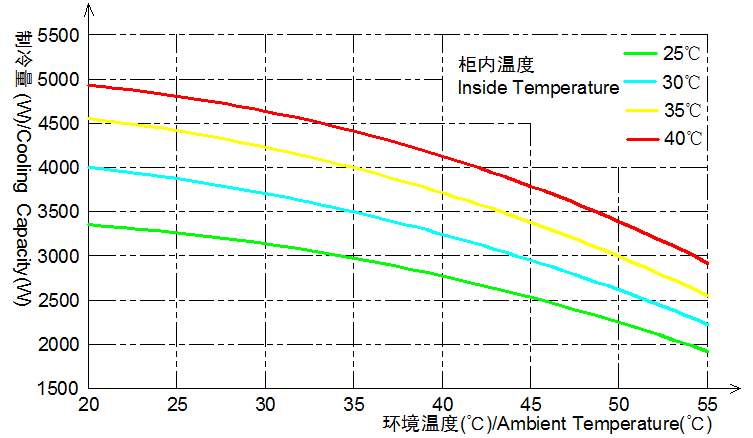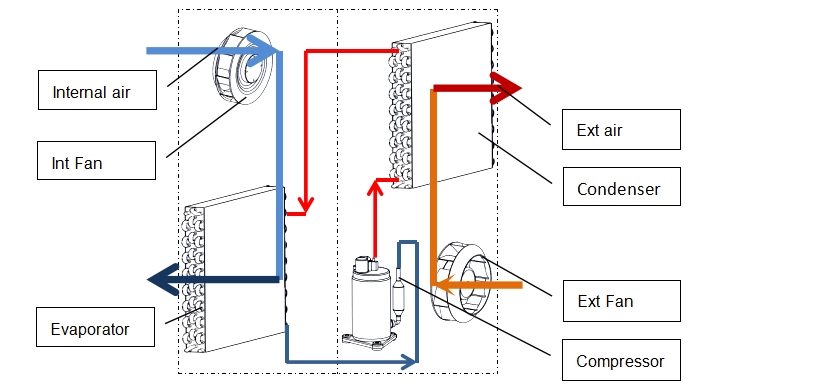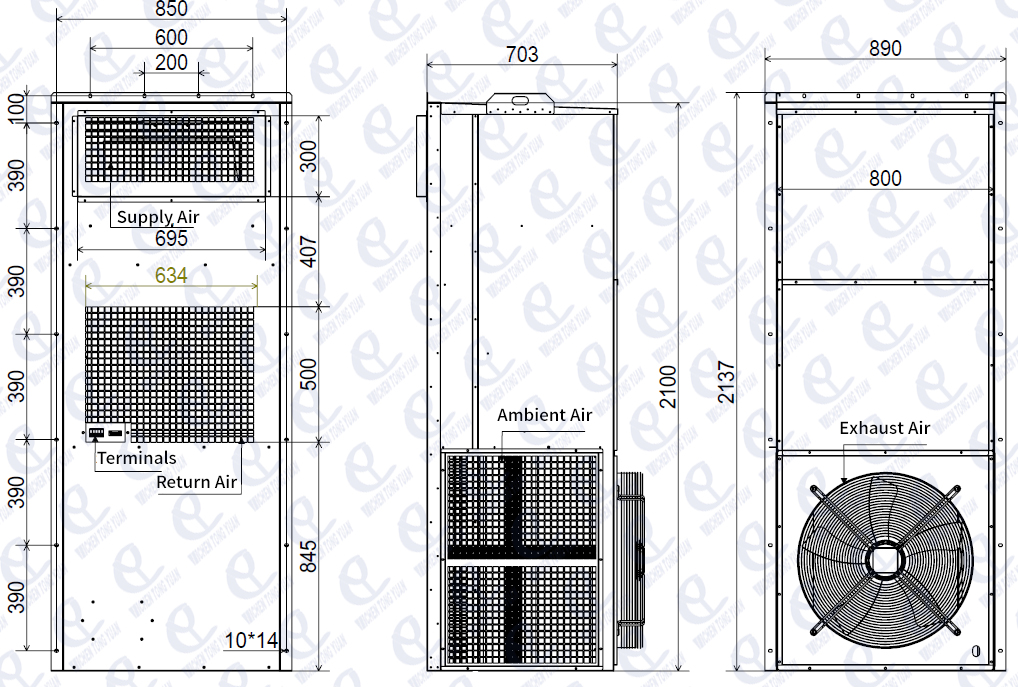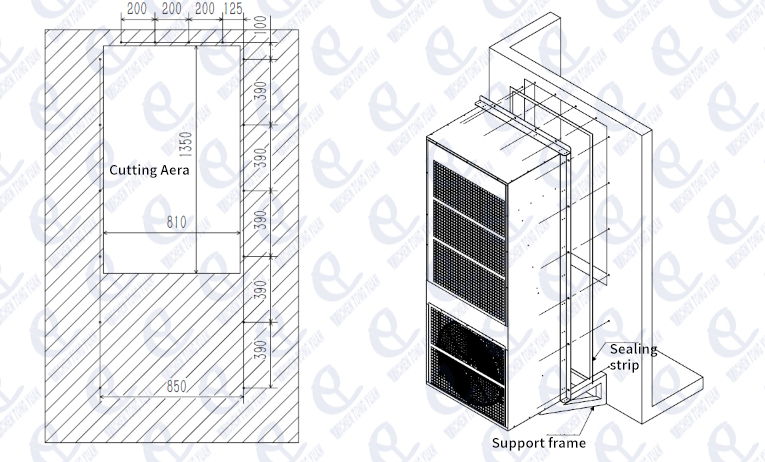Product introduction video
Certificate

CY-A200NA Features
Cytech Energy Storage Container Air Conditioner is a state-of-the-art cooling solution designed to optimize the temperature regulation within energy storage containers. Engineered for efficiency and reliability, this air conditioning unit is essential for maintaining the optimal performance and longevity of your energy storage systems.
◆ Efficient rotor compressor: reliable and energy-saving
◆ Intelligent control: Power on self check and power on self start function, RS485 communication interface
◆ Digital tube display: on-site parameters can be set, and the temperature and operating status inside the cabinet can be displayed
◆ High protection level: Perfect for outdoor environments
◆ Configure external circulation air inlet screen to prevent willow catkins from blocking the radiator
◆ Upper air outlet structure: The air outlet can be connected to the air duct
◆ Environmentally friendly refrigerants: adding a touch of greenery to the Earth
◆ Optional functions: heating function, dehumidification function
Technical parameter
Name | Technical parameter |
Model |
CY-A200NA |
| Dimensions(Outdoor unit/Indoor unit) | WxHxD= 800 x 2100 x 703 mm ( 32 x 83 x 28 inch ) |
Main power supply |
3~380VAC±15% 50Hz |
Cooling capacity(Rated) |
20.0 KW@L35/L35 |
Power consumption(Rated) |
8.5 KW@L35/L35 |
Heating capacity(optional) |
9000W(Option) |
Surface treatment | Powder coating (RAL7035) |
Internal circulation air volume |
6000 m3/h |
Work temp. range | -40℃~+55℃ |
Noise | 72 dB(A) |
IP Grade | IP55, NEMA 4, NEMA 4X |
Net Weight | 210 KG |
Refrigerant |
R410a |
Note:@L35/L35 is Internal temperature 35℃, ambient temperature 35℃
Capacity curve

Thermal cycle and air flow
Cooling: the high-pressure refrigerant liquid in the system enters the evaporator and evaporates to absorb heat of the air in the cabinet, so the air is cooled, and the refrigerant that evaporates into gas in the evaporator is inhaled by the compressor and compressed into the high-pressure and high-temperature refrigerant gas, which enters the condenser and cooled to refrigerant liquid, and then re-enters the evaporator to cool the indoor air, and circulates accordingly.

Dimension

Installation
Please design and install the product according to the installation holes drawings below

Electrical wiring diagram

| Item | Definition |
| 1 | DRY CONTACT-NC |
2
| DRY CONTACT-COM |
| 3 | DRY CONTACT-NO |
| 4 | RS485-A |
| 5 | RS485-B |
Attention
· It is strictly prohibited to turn the air conditioner upside down or lie flat during transportation or handling
· Install vertically and make sure the polarity of wiring is correct and firm.
· To avoid objects blocking the air circulation at the inlet and outlet of internal and external circulation.
Energy Storage Container Air Conditioner
When choosing an air conditioner for an energy storage container, several features are important to ensure optimal performance, safety, and energy efficiency. Here are some key features to consider:
Energy Efficiency
High Energy Efficiency Ratio (EER) or Seasonal Energy Efficiency Ratio (SEER) ratings to reduce energy consumption.
Temperature Control
Precise temperature control to maintain optimal conditions for the stored energy equipment.
Programmable thermostats for better temperature management.
Humidity Control
Dehumidification capability to prevent moisture buildup, which can damage sensitive equipment.
Reliability and Durability
Robust construction to withstand harsh environmental conditions.
Reliable components that require minimal maintenance.
Cooling Capacity
Adequate BTU (British Thermal Units) rating to handle the specific heat load of the container.
Compact and Modular Design
Space-saving design to fit within the constraints of the container.
Easy to install and remove for maintenance or relocation.
Low Noise Level
Quiet operation to avoid disturbing nearby operations or personnel.
Remote Monitoring and Control
Capabilities for remote monitoring and control to allow for easy adjustments and troubleshooting.
Integration with building management systems (BMS) for centralized control.
Safety Features
Overload protection, high and low-pressure switches, and refrigerant leak detectors to prevent accidents.
Fire-resistant materials and components to enhance safety.
Environmental Friendliness
Use of eco-friendly refrigerants with low global warming potential (GWP).
Compliance with environmental regulations and standards.
Redundancy and Backup
Dual or backup systems to ensure continuous operation in case of a primary unit failure.
Ease of Maintenance
Accessible design for easy maintenance and repairs.
Clear indicators for system performance and issues.
Considering these features can help in selecting an air conditioner that will effectively and efficiently manage the climate within an energy storage container, ensuring the longevity and reliability of the stored equipment.







































